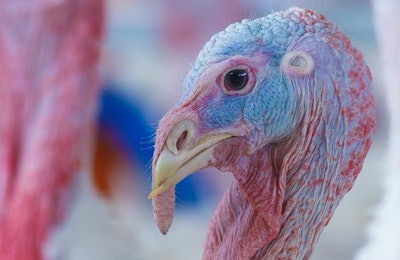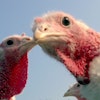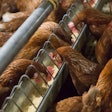
Minnesota has had four commercial turkey flocks affected by low pathogenic avian influenza, according to a report from the World Organisation for Animal Health (OIE).
Three of the farms to have confirmed cases are in Stearns County, while the other one is in Kandiyohi County.
The Minnesota Board of Animal Health (MBAH) had earlier announced the case in Kandiyohi County, as well as one of the cases in Stearns County. Since that time, OIE announced two additional cases in Stearns County. The OIE report was released on November 8.
In all four flocks, the presence of low pathogenic H5N2 avian influenza was detected and confirmed after routine surveillance and testing procedures were conducted.
Between the four flocks, a total of 178,000 turkeys were affected. The affected Kandiyohi County farm had 50,000 turkeys, while the Stearns County flocks had 61,000, 43,000 and 24,000 turkeys.
Control measures being used include quarantine, zoning and movement control inside the country. Surveillance of birds both within and outside the control zone.
Turkeys from all infected premises will be depopulated through controlled marketing.
According to the OIE, the MBAH and the U.S. Department of Agriculture’s Animal and Plant Health Inspection Services (APHIS) are conducting an epidemiological investigation of the events and have increased surveillance as a result of these detections.
OIE stated that it will publish follow-up reports concerning the avian influenza situation in Minnesota until it is resolved.
Avian influenza in California
Minnesota is one of two U.S. states to have confirmed cases of low pathogenic avian influenza detected in commercial turkey flocks during recent months. Five turkey flocks in Stanislaus County, California,have been affected, but in each of those cases the virus was of the H7N3 serotype. The last low pathogenic avian influenza case was confirmed on October 11, according to the California Department of Food and Agriculture.



















